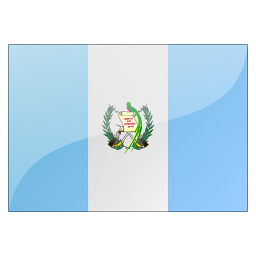



The most striking feature of Tikal is its towering, steep-sided temples, rising to heights of more than 144ft (44m), but what distinguishes it is its jungle setting. Its many plazas have been cleared of trees and vines, its temples uncovered and partially restored, but as you walk from one building to another you pass beneath a dense canopy of rainforest amid the rich, loamy aromas of earth and vegetation. Much of the delight of touring the site comes from strolling the broad causeways, originally built from packed limestone to accommodate traffic between temple complexes. By stepping softly you’re more likely to spot monkeys, agoutis, foxes and ocellated turkeys.

Depending on who you talk to, Guatemala City (or Guate as it's also known) is either big, dirty, dangerous and utterly forgettable, or big, dirty, dangerous and utterly fascinating. Either way, there's no doubt there's an energy here unlike anywhere else in Guatemala. It's a place where dilapidated buses belch fumes next to BMWs and Hummers, and where skyscrapers drop shadows on shantytowns.

The coastal area around Monterrico is a totally different Guatemala. Life here is steeped with a sultry, tropical flavor, with rustic wooden-slat and thatched-roof architecture and awesome volcanoes that shimmer in the hinterland. It's fast becoming popular with foreigners as a beach break from Antigua or Guatemala City. On weekdays it's relatively quiet, but on weekends and holidays it teems with Guatemalan families.

The highlands – El Altiplano – stretch from Antigua to the Mexican border; they comprise Guatemala's most breathtaking region by some degree. Maya identity is stronger here than anywhere in the country and over a dozen distinct groups dwell within the region, each with its own language and clothing. Indigenous tradition blends most tantalizingly with Spanish, and it is common to see Maya rituals taking place in front of and inside colonial churches.

Santa Cruz fits the typically dual nature of the Atitlán villages, comprising both a waterfront resort (home of the lake's scuba-diving outfit) and an indigenous Kaqchiquel village. The village is about 0.35 miles (600m) uphill from the dock (there are tuk-tuks if you don't fancy the stiff walk). It's a lovely spot, with relaxing accommodations, activities on the water and a complete lack of hustle.

Spreading onto a peninsula at the base of the volcano of the same name, San Pedro remains among the most visited of the lakeside villages – due as much to its reasonably priced accommodations and global social scene as to its spectacular setting. It's a backpacker haven – travelers tend to dig in here for a spell, in pursuit of (in no particular order) drinking, fire-twirling, African drumming, Spanish classes, volcano hiking, hot-tub soaking, partying and hammock swinging.

Quiché is the homeland of the K'iche' people, though other groups form the fabric of this culturally diverse region, most notably the Ixil of the eastern Cuchumatanes mountains. Most visitors who come to this largely forgotten pocket of the country are on a jaunt to the famous market at Chichicastenango. Similarly captivating commerce is conducted in the less trammeled territory of Santa Cruz del Quiché, the departmental capital to the north. On its outskirts lie the mysterious ruins of K'umarcaaj, the last capital city of the K'iche'. Adventurous souls push further north for Nebaj, heart of the culturally vibrant Ixil Triangle, with myriad hiking opportunities.

Vast, sparsely populated and jungle-covered, Guatemala's largest and northernmost department is a wonderland of exploration. Whether it's the spectacular architectural achievements of the Classic Maya, the bounty of the forest or the chance to lounge lakeside that inspires you, it's all here in abundance.

Surrounded by valleys with mountains serrating the horizons, Chichicastenango can seem a world away from the rest of Guatemala. When its narrow cobbled streets and red-tiled roofs are enveloped in mist, it's downright magical. The crowds of crafts vendors and tour groups who flock in for the huge Thursday and Sunday markets lend it a lively commercial atmosphere. Masheños (citizens of Chichicastenango) adhere strongly to Indigenous religions and ceremonies, and the town's various cofradías (religious brotherhoods) hold processions in observance of their saints around the church of Santo Tomás.

Separated from the highlands by a chain of volcanoes, the flatlands that run down to the Pacific are universally known as La Costa. It's a sultry region – hot and wet or hot and dry, depending on the time of year – with rich volcanic soil good for growing coffee, palm-oil seeds and sugarcane.